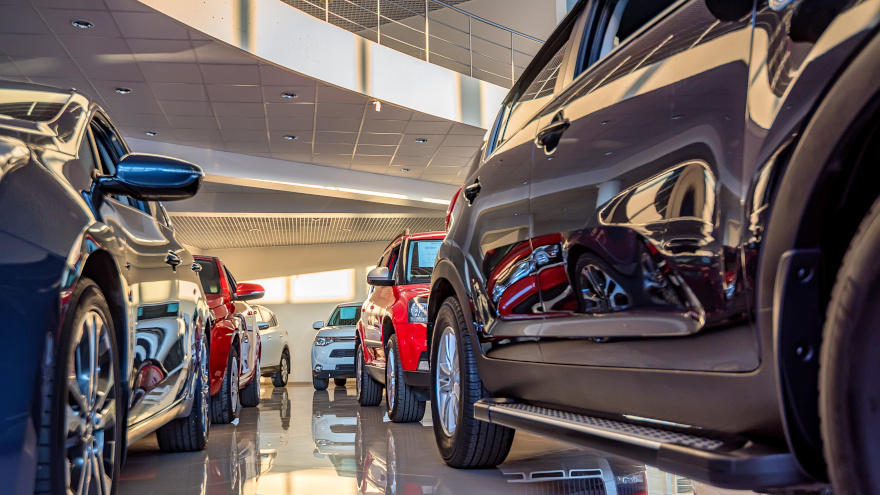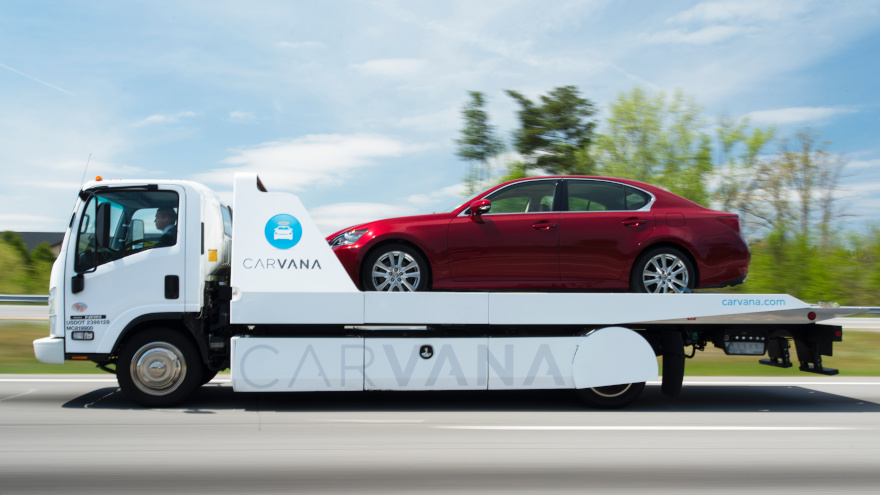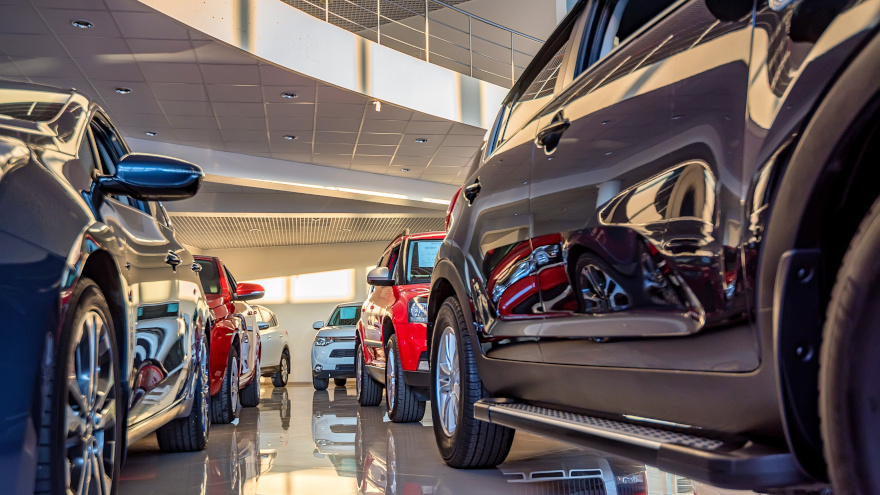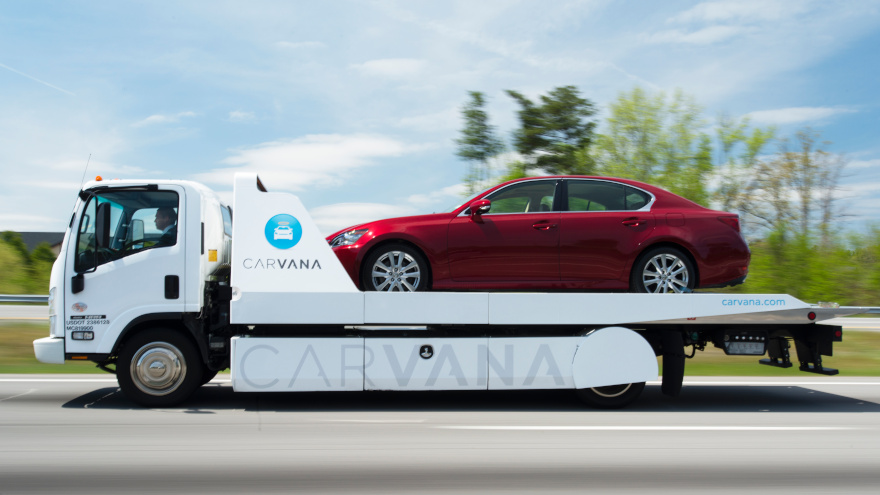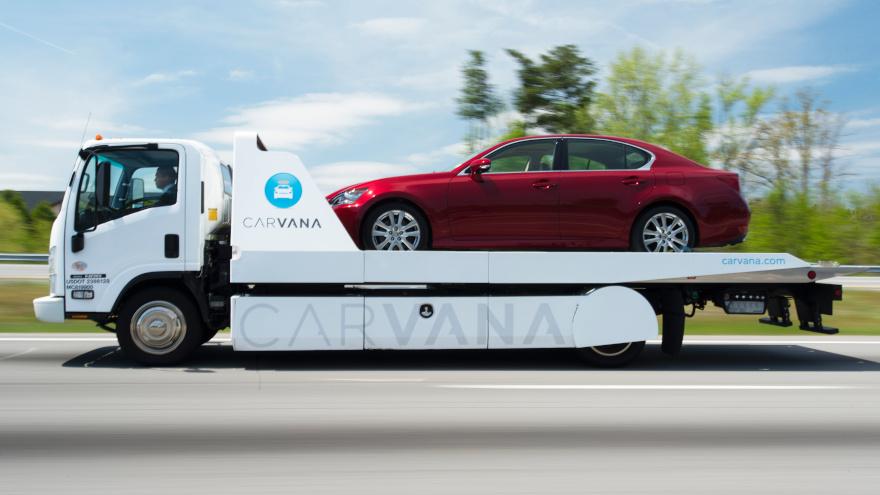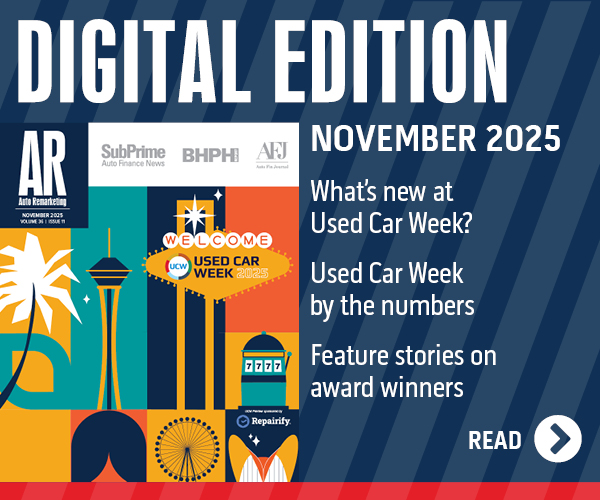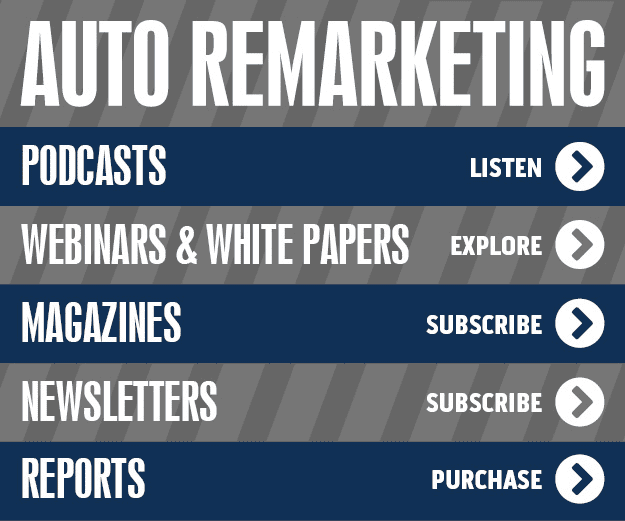During Penske Automotive Group’s fourth quarter earnings call that took place on Feb. 5, chairman Roger Penske wanted to comment early on about the company’s 2019 achievements.
He noted that the company retailed more than 500,000 new and used units and increased its used-to-new ratio from 1.20 to 1.28.
The company also opened two greenfield used supercenters, increasing its used-vehicle supercenter location total to 16.
“In total, we returned $305 million or 70% of our income to shareholders through share repurchase and dividends,” Penske said.
He added that 33 Penske dealerships were named out of 100 in Automotive News’ Best Dealerships To Work For.
“We had the No. 1 dealership in 2018, and we had the No. 1 dealership in 2019,” he said.
But then he moved on to discuss the fourth quarter of 2019, and that report also featured good news. Revenue increased 8.1%, and same-store retail automotive revenue increased 5.5%.
Used-vehicle supercenters looking up
Used vehicles were part of the good news as the company reported that for the three months ended Dec. 31, 2019, the used-vehicle supercenters increased units retailed by 3.1% to 15,405.
The supercenters also increased revenue by 12.0% to $292.7 million. Total gross profit per unit retailed increased 3.2%, or $61.
In the fourth quarter, the supercenters generated almost $300 million in revenue. Penske reported that the average gross transaction price was $15,700, and the average gross per unit retailed increased 3% to $1,951. That brought a gross margin of 12.4%.
Penske said the 16 supercenters include six in the United States and 10 in the U.K.
“We expect to grow the supercenter business through a combination of e-commerce initiatives and greenfield sites,” he said.
The two greenfield used supercenter locations the company opened in 2019 included one in the United States and one in the U.K., and Penske reported that both locations have had successful openings, outperformed the company’s initial expectations and are profitable.
The company expects to open two supercenter sites in 2020 and two more in early 2021, he said. In response to a request for more details from a conference call participant, Penske said one of the 2020 sites will be in New Jersey and the other in the Phoenix market.
“And they would be operational, hopefully both of them, one for sure, by the end of 2020,” Penske said.
Overall used and CPO news for the company was mostly good.
Total automotive units retailed were up 2% on a same-store basis, with new up 1% same-store used up 3%.
U.S. CPO sales in the fourth quarter increased 12%, and CPO represented 43% of used-vehicle unit sales.
But although new vehicle gross profit was up $245 or 8%, used vehicle gross profit was down $25 or 2%.
Penske went on to discuss the company’s retail commercial truck dealership business, noting that it retailed 3,728 new and used trucks in the fourth quarter, generating $600 million of revenue with a return on sales of 3.5%.
He said that because of the company’s July acquisition of Warner Truck Centers, its new and used truck sales increased 41%.
“However, our same-store unit sales declined 29%, mainly due to the timing of deliveries and bankruptcies of two of our largest customers in the fourth quarter,” Penske said.
Technology a strong area of focus
“We continue to improve our digital and enhance our capabilities and customer tools,” Penske said, adding that the company is offering more than 58,000 vehicles online and ready for purchase.
In the fourth quarter, the company’s U.S. new and used unit sales originated from digital sources hit more than 40% for the first time, Penske reported.
The company saw an increase in traffic and an 18% increase in leads. Customers engaged in the company’s Google business listings increased by 40%.
In addition, the company completed the rollout of docuPAD technology to all of its U.S. locations.
Penske said that allows the company to engage customers digitally by creating, processing and securing funding of a transaction electronically while improving efficiencies. That brings cost savings to the company’s back offices, Penske said.
“Customer satisfaction, whether self-service tools such as ability to pay online, make appointments and online estimating for our collision centers, continue to improve the customer experience,” Penske said.
He added, “Their success has encouraged us to pilot new technologies such as videos and digital pictures for service updates and Buy Your Car Now. We continue to enhance our proprietary online closed bid wholesale auction site in the U.K. with approximately 4,000 active online bidders and we've sold 21,000 vehicles through that source last year.”
He also announced what he describes as the initial pilot of the company’s new digital dealership on retail sales platform in the U.K. that the company is testing with its infinity partners.
“It's performing very well, and we continue to roll out enhancements that will result in a full digital transaction,” he said.
More on supercenters
On the supercenter side, the conference call participant also asked Penske if the company had discussed approaching the market differently, “perhaps in the lines of what Sonic is doing with EchoPark.”
Penske answered that Sonic has “a different model, probably higher volume, lower margin.”
“Because when you look at our margins today, we're in the 12% to 13%, and you compare that to the traditional used car business, which I think we were at 4.7%.”
He continued, “So, we see this as the way we want to continue. On the other hand, is there an opportunity to have an electronic opportunity to do the same thing where we don't have units and dealerships for the customers to view. So that’s an opportunity in the future.”
automotiveMastermind, a provider of predictive analytics and marketing automation products for dealerships and manufacturers, said on Thursday that all major OEMs now have access to its Market EyeQ sales platform.
In addition to servicing all major OEMs, representing 30 brands, the company said it is expanding its service-to-sales offering with CDK integration.
automotiveMastermind’s ability to service all major OEMs comes from what the company says is a commitment to building an improved incentives architecture within the Market EyeQ sales platform, which it says can accommodate deeper OEM incentives.
Household demographic data and other strategic information from IHS Markit and TransUnion powers Market EyeQ.
The company says Market EyeQ provides integration inside the dealership to better understand every buyer in a dealer’s market.
“Since last year’s launch of Market EyeQ, we’ve been providing exponential ROI for our dealer partners by identifying quality new audiences, driving high engagement and offering intelligence to close more sales,” said automotiveMastermind co-founder and chief executive officer Marco Schnabl.
Schnabl added, “This year, we are doubling down on our mission to predict and engage with every automotive sales and service opportunity while delivering the highest quality results for dealers.”
He said the company is using additional data sources to provide actionable intelligence on every automotive consumer.
“The ability to now service all major OEMs gives us the unprecedented ability to help even more dealers across the country experience the Market EyeQ advantage,” Schnabl said.
“The service drive is a huge area of opportunity for dealers, but they need insights on those customers who are unknown to them,” said automotiveMastermind chief product officer Joe Kacala.
Kacala continued, “Market EyeQ’s Service Conquest component provides those insights with an extremely high VIN match rate, allowing them to activate more in-market buyers into their portfolio.”
Kacala said the recent expansion of Service Conquest’s capabilities includes CDK service arrival notifications and service appointment reports.
“This allows dealers to plan ahead for scheduled appointments and have compelling consumer data on walk-ins, too,” Kacala said.
Technology has transformed every aspect of business development in the automotive industry over the past few decades, according to The Appraisal Lane, a mobile app-based community of appraisers who put guaranteed cash offers on used cars.
One of those transformations, according to the company, is in the area of the industry’s approach to lead generation for new and used cars. More specifically, that means the solicitation of a person’s contact information and the person’s vehicle of interest.
After about 25 years of fine-tuning the process and committing hundreds of millions of dollars to increasing the quantity of leads, the industry closes leads at a meager 12% ratio, according to The Appraisal Lane.
A new white paper from The Appraisal Lane explores challenges with automotive lead generation today. The report highlights existing obstacles along the path to purchase, the associated costs to the industry, and actionable tips to help dealers and manufacturers improve customer engagement.
The paper starts out by asking why the industry measures itself against the 12% benchmark.
“Because our industry standard is built on penciling an acceptable ROI, not achieving our true potential,” the company writes.
The white paper continued, “The opportunity cost of this perspective resides in the 88% of consumers who don’t find a solution in our existing process.”
The study addresses what the company describes as the automotive industry's unsustainable closing ratio and the expenses that come with processing bad leads.
Those expenses include personnel costs, lost profits, holding costs, and the negative financial impact of dissatisfied customers and employees.
The study also challenges the manner in which automotive leads are generated and qualified.
To do that, it stresses the importance of deeper engagement with trade-in customers.
The study cites 2018 NADA data in stating that those customers represent an “overwhelming majority,” or 65% of the people who buy replacement vehicles each year.
"For the past 25 years, we've relied on technology to drive consumers into lead forms, largely ignoring their wants and needs when buying a vehicle," said The Appraisal Lane co-founder and chief executive officer Jeff Risner in a news release.
Risner continues, “The trade-in remains the most challenging part of the car buying process, despite the fact that it’s the first and most important step for millions of consumers. The end result is an unacceptably low 12% closing ratio for our industry, due in large part to an unsatisfying customer experience."
He added, “It’s time to capitalize on the remaining 88% of lost sales opportunities by engaging with car buyers in deeper, more meaningful ways.”
The white paper cites industry statistics and consumer data and provides actionable tips to help dealers and OEMs. One of those tips is engage in a meaningful two-way dialogue with consumers at the start of the car buying process.
That would increase the likelihood that they will visit your dealership by three times the industry average, according to 2018 data from Digital Airstrike.
The paper suggests providing a much-improved trade-in experience and uses 2018 Salesforce data to state that would offset consumer defection to other brands and dealerships by as much as 60%.
The report lists three fundamental obstacles with the current trade-in process:
— The industry has automated a process that cannot be successfully automated.
— The industry has allowed consumers, who are predominantly not car experts, to rely on often-meaningless information. That same information is endorsed by dealers, who are car experts, when they present that information on their websites.
— The industry has missed significant sales opportunities by failing to provide an engaged trade-in process.
“In reality, trade-in customers have the potential to be our industry’s most engaged customers,” the report states.
The paper goes into five steps for better internet lead generation, starting with the trade:
— Engage with consumer about current vehicle
— Connect consumer with dealer
— Attract consumer to next vehicle
— Convert consumer into next vehicle sale
— Retain customer for life
Jeff Dyke believes that saving reconditioning time adds margin to the bottom line.
“We are very excited to have this tool and believe that it will speed up our cycle times and allow us to sell more cars,” said Dyke, who is president of Sonic Automotive, in a news release.
Dyke is referring to reconditioning software product ReconVelocity. Sonic Automotive, which says it is the fifth largest dealer group in the country, has chosen ReconVelocity to install its suite of products across 100 dealerships representing 25 brands.
ReconVelocity says it automates the reconditioning process, improving communication between all personnel and departments involved in the process.
The company says its platform is a cloud-based workflow suite of products that are customizable to each dealership’s unique recon needs.
That, according to the company, allows dealers to reduce their recon time by half and boost their profitability.
Sonic Automotive evaluated the ReconVelocity product at seven of its locations. The evaluations helped teams accelerate their recon processes by at least three days, according to the company. It also simultaneously showed the potential for improvement and higher profits.
ReconVelocity and its team will begin installation and training across Sonic’s 100 dealerships immediately.
“Sonic Automotive is looked to as an industry leader that applies best practices to every aspect of their operations,” said ReconVelocity owner Hugh Hathcock.
He continued, “We are honored to be a part of their extended team and look forward to helping them drive even greater performance by improving their reconditioning process.”
Car search engine MotorCloud has added a new feature called Cloud Cash, which allows shoppers to upload their vehicles to the cloud and receive bids from car dealers across the country.
The company said consumers, through their public MotorCloud account, can now post vehicles for sale on private dealer trading platform, DealersLink.
With MotorCloud, once consumers post their vehicles, dealers can place competing bids on the cars. The consumer then receives the winning offer, which MotorCloud said will allow the consumer to sell his or her car quickly.
And the consumer, according to MotorCloud, can sell that vehicle without being contacted by several dealers at once.
With Cloud Cash, consumers can see book values alongside their offers from dealers. Also on MotorCloud, consumers can also post their vehicles for sale to other consumers.
Cloud Cash brings an opportunity for dealers as well, according to MotorCloud. Those dealers gain access to private sellers, which the company describes as “the most sought-after source of vehicles.”
With the CloudCash lane in DealersLink, dealers can more easily view and bid on consumer vehicles, according to the company.
MotorCloud says its search index features 5.7 million cars and a large inventory of new and used vehicles on the Internet.
The company says that to understand the market using its product, users don’t have to bookmark multiple sites, input searches on different platforms and bring together the results. The company says the public now has access to its market analytics and pricing technology that was previously only available to dealers.
When they do a MotorCloud search, consumers can shop all cars in the market and have vehicle analysis that is based on the entire market picture, according to the company.
It’s already been quite a 2020 for Carvana expansion.
The used vehicle e-commerce platform has already made at least 10 expansion announcements since the beginning of the year, with rollouts in states such as Wyoming, Wisconsin and Minnesota. On Jan. 30 and 31, the company brought its services to three markets in Central Valley and Northern California.
On Wednesday and Friday, the announcements continued as Carvana launched in Pueblo, Colo., and St. George, Utah.
With the Colorado and Utah moves, Carvana now offers as-soon-as-next-day vehicle delivery in 161 U.S. markets.
Regarding the Pueblo announcement on Wednesday, Carvana founder and chief executive officer Ernie Garcia noted that the company first launched in Colorado two years ago.
“In that short time, we’ve found customers have embraced the ease and convenience we offer car buyers,” Garcia said in a news release.
He continued, “We anticipate Pueblo area residents will agree, and we look forward to being a part of their community.”
Discussing the St. George move, Garcia mentioned the company’s rapid expansion across the West, “offering our easy, transparent, customer-centric approach to car buying to more and more customers.”
He added, “We look forward to now also bringing St. George The New Way to Buy a Car.”
Absolute Sourcing is a new feature to DealerSocket’s Inventory+ that the company says “takes a dealer’s buy/sell list to the next level.”
It does that by showing dealers where to acquire vehicles that fit in their inventory.
Absolute Sourcing and New Car Pricing are two enhancements that DealerSocket will unveil at NADA this year, and the company says it built those enhancements to ensure that dealers maximize profitability instead of only velocity within their inventory strategy.
Alongside what the company describes as “a more intuitive buy/sell list,” Absolute Sourcing allows dealers to know which cars are profitable and not profitable for their lot.
It also shows them where to find profit drivers. That, according to DealerSocket, eliminates the need to hunt through auctions and other systems to find recommended vehicles.
The company said that with Absolute Sourcing, vehicles will source from missed appraisals, auctions, and in-group trades.
New Car Pricing is the second enhancement, and dealers can use that to manage pricing new vehicles in bulk, with visibility into OEM incentives and market listings.
That empowers dealers to make intelligent, market-driven pricing decisions and save time, according to the company, which adds that dealers can price their new inventory while remaining OEM compliant, based on factors such as market conditions, MSRP, list price, and invoice.
Additional features within DealerSocket’s Inventory+ that the company is showcasing at NADA this year include:
— Enhanced Ideal Inventory Model: The company describes the Ideal Inventory Model, or IIM, as the backbone of Inventory+. Bringing a combination of market data and a dealership’s historical transaction data, it shows dealers which vehicles will increase their profits.
Dealers can use recent enhancements to IIM’s algorithm to make more intelligent, data-driven purchase decisions, pricing, and disposition decisions, according to the company, which adds that around each vehicle, IIM offers better data and analytics.
— Single Page Appraisals: With the ability to configure the data they prefer and need, dealers can complete a faster appraisal from one, simple, configurable screen. To fit their needs, each user can add, move, and adjust features on their appraisal screen.
— Group Management: To save time and improve overall group performance, dealer groups can manage inventory across multiple rooftops. Also, across rooftops, regions, or any custom grouping, dealers can configure their enterprise’s view.
— DealerSocket’s DealerFire SRP/VDP Data: Dealers can now view search results page/ vehicle display page data from DealerFire within their inventory manager in Inventory+, which the company says tightens the link between DealerSocket software. Dealers, receiving this data directly into Inventory+, can make better pricing and merchandising decisions. And they can do that without jumping into different systems.
“We’ve always focused on driving and working to maximize profits for dealers,” DealerSocket’s Inventory+ general manager Brad Kokesh said in a news release.
He continued, “The launch of New Car Pricing and Absolute Sourcing will allow our dealers to increase profits and maintain turn. Our competitors have been focused solely on velocity. However, DealerSocket is focusing on driving profits with turn, and we have all along. This is evident in the incredible enhancements that we are releasing with New Car Pricing and Absolute Sourcing within our Inventory+ product at NADA.”
E-commerce platform Carvana describes itself as the fastest-growing auto retailer in the United States.
Noting that rapid growth, Carvana founder and chief executive officer Ernie Garcia says “We’re growing incredibly fast and expanding as-soon-as-next-day delivery to more communities every day.”
That growth continued with Carvana’s Wyoming launch announcement on Monday, with the company offering as-soon-as-next-day vehicle delivery to Cheyenne.
With the announcement, Carvana now offers as-soon-as-next-day vehicle delivery in 159 U.S. markets.
“We’re looking forward to bringing Cheyenne a large, diverse vehicle inventory with the convenience of our online car buying option,” Garcia said in a news release.
The National Automobile Dealers Association says its new NADA Analytics platform gives subscribing NADA 20 Group members the ability to navigate, view and compare different reports that compile data from various sources.
Those sources, according to NADA, include Google Analytics and Facebook, and industry-specific third-parties such as Cox Automotive (Autotrader and vAuto).
NADA says the platform will become a central data reporting hub exclusively for dealers in NADA 20 Groups.
NADA has teamed up with auto dealership analytics company Orbee Auto to launch the new platform. NADA and Orbee are working to develop standards and systems for the next generation.
The association and Orbee Auto will highlight a live demo of the new NADA Analytics platform at the 2020 NADA Show in Las Vegas.
NADA vice president of dealership operations Steve Park said the platform will improve how dealers analyze their business and make decisions.
“Dealers have a gold mine of data within their stores, and through the NADA Analytics platform, participating dealers will be able to make better and smarter decisions in their business development center, internet sales, and digital marketing operations,” Park said in a news release.
NADA said it has worked with Orbee Auto to build a foundation that “supports the entire ecosystem.” That will allow integration of additional sources that NADA says will provide insight into the various departments within dealers’ retail automotive operations.
The 20 Group moderators and dealers in their groups will work to share education and best practices with one another.
“Bringing Orbee’s vast digital marketing knowledge to the NADA Analytics platform enables us to assist dealerships in leveraging data to gain a competitive advantage,” said Orbee Auto chief executive officer and co-founder Daniel Kim.
Kim also serves as a frequent guest speaker at NADA 20 Groups and Academy.
“We are excited to showcase this new product offering and reinforce NADA’s position as the go-to resource for franchised new-car and -truck dealers looking to improve operations and profitability through education, consulting and training,” said NADA senior vice president of dealership operations John Beckman.
NADA said NADA Analytics offers resources that help dealers learn how analytics applies to their digital marketing.
A NADA Analytics editorial section allows dealers to remain up to date on automotive industry news that NADA and other participating third parties publish.
“As the platforms to reach and engage consumers evolve, it is important to have accessible data that is actionable for dealers in driving business decisions,” said Orbee Auto chief operating officer and co-founder Atul Patel.
Ernie Garcia says that as Carvana continues expanding rapidly from coast to coast, growing its reach in California is a crucial part of that effort.
Garcia is founder and chief executive officer for used-vehicle e-commerce platform Carvana, and the company on Friday said it launched its as-soon-as-next-day vehicle delivery to Chico and Yuba City, Calif.-area residents.
On Thursday, the company said it launched in Hanford, which is located in California’s central valley.
With the two announcements, Carvana now offers as-soon-as-next-day vehicle delivery in 158 markets across the United States.
Talking about the Hanford announcement, Garcia said, “As demand increases for an easy, transparent car buying experience, we’re confident that Hanford-area residents will appreciate our presence in the market.”
And addressing the Yuba City and Chico moves, he added that residents of that area “can now join thousands of other Californians who enjoy ordering their next car online and having it delivered as soon as the next day.”

